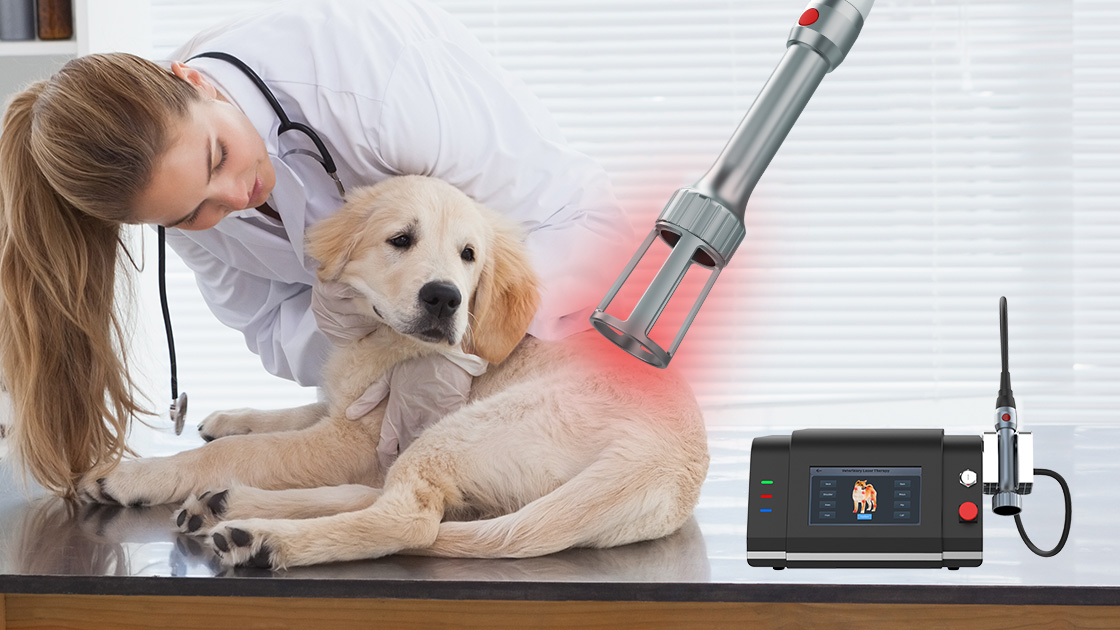Page Contents
What is Laser Therapy?
Laser therapy offers a versatile treatment option for various medical conditions in dogs. Utilizing beams of light with specific frequencies, lasers penetrate tissues, triggering photobiostimulation. This process leads to changes in cell metabolism, increased circulation, and reduced inflammation and pain. The laser-induced increase in Adenosine-triphosphate levels fuels cell function, while photochemical reactions boost blood flow, supporting cellular growth, repair, and production of vital compounds. Additionally, the therapy releases endorphins, acting as painkillers and anti-inflammatories, crucial for tissue regeneration and restoration of optimal function. Laser therapy plays a crucial role in promoting canine health and well-being.
There are two main types of lasers: hot lasers and cold lasers, each with different frequencies and applications. Cold lasers stimulate surface skin cells, promoting circulation and cell regrowth. They effectively treat conditions like arthritis, muscular injuries, and skin wounds, aiding in healing. Hot lasers can reach deeper tissues. Laser therapy offers a non-invasive approach to treat disorders without surgery or medications, reducing side effects and recovery time. However, not all veterinary practices have the necessary equipment. Your veterinarian can guide you to a nearby facility equipped to provide this beneficial therapy if required.
Laser Therapy Procedure in Dogs
Your veterinary laser therapist will conduct a thorough physical exam and may take x-rays to fully comprehend your dog’s condition. A tailored laser treatment plan will be devised, considering the number of sessions, laser type, and exposure duration.
During the laser therapy session, the operator will wear protective eye coverings, ensuring your dog’s safety. Your dog’s eyes will be shielded or redirected from the laser, and there’s no need for hair removal or sedation. The veterinarian will use the laser wand to treat the affected area, with exposure typically lasting 10-20 minutes. Initially, treatments occur a few times a week, gradually reducing to once a week or every two weeks as healing progresses.
Efficacy of Canine Laser Therapy
Veterinary laser therapy proves highly effective in relieving pain, reducing inflammation, and promoting wound healing in pets. This non-invasive, drug-free approach stimulates the body’s natural healing processes, providing a surgery-free alternative for various conditions.
In some dogs, the positive effects of laser therapy become evident shortly after beginning treatment. However, most conditions require several sessions before noticeable improvement occurs. The severity of the condition being treated may necessitate multiple treatments for significant progress. Postoperatively, laser therapy reduces the risk of complications, while its long-lasting effects minimize the chances of condition recurrence. Embrace the healing power of veterinary laser therapy for your beloved pets!
Laser Therapy Prevention in Dogs
Laser therapy effectively treats common musculoskeletal conditions and injuries like sprains and strains in dogs. Ensuring a safe play environment is crucial to preventing injuries. Providing a secure fenced-in area for off-leash play reduces the risk of accidents or dog fights. Keep dogs on a leash outside controlled areas to prevent traumatic injuries. Regular exercise and fitness decrease injury chances. Frequent walks benefit both you and your dog.
Monitoring your dog’s health closely and scheduling routine veterinary check-ups address concerns early, preventing potential problems. Maintaining a healthy diet and regular vet visits are essential for your dog’s well-being. Embrace these practices to keep your furry companion happy and injury-free.
